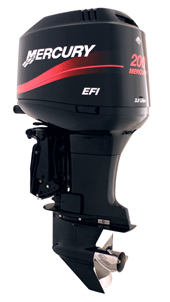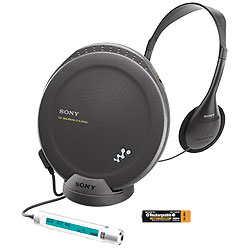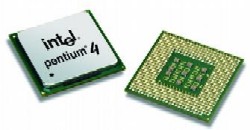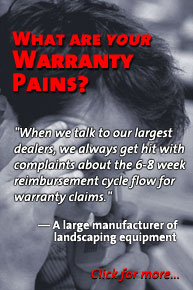June 9, 2003 |
ISSN 1550-9214 |
Introducing the Warranty Week 500:Most of the major players in warranty claims management recently reported details about their first quarter spending. Here are the results, organized by industry.The Financial Accounting Standards Board has performed an unbelievably beneficial service for warranty management professionals by requiring companies to report in detail about all the guarantees they make, including product warranties. Paragraph 14(b) of FASB Interpretation No. 45, which became effective for all interim and annual financial statements filed for periods ending after Dec. 15, 2002, requires manufacturers to present, in a tabular format, an accounting of their warranty reserve fund balance, the amount spent to satisfy current claims, and the amount added to finance future claims. Warranty Week has found 750 companies that made the required disclosures in financial statements covering periods generally ending on March 31, 2003.
Top 25 Warranty ProvidersThe top 25 warranty providers alone count for some $4.24 billion out of the $5.7 billion in total first quarter claims. For that matter, just General Motors Corp. accounts for almost 20% of the total. GM, Ford Motor Co., Hewlett-Packard Co. and Dell together account for half the first quarter spending, with $2.7 billion among them. Just those four ended March 2003 with almost $17.7 billion in their warranty reserves -- close to 54% of the reported industry total. With the addition of first quarter estimates for Dell, Sun, Cisco, Lucent and Deere derived from the six- to twelve-month reports they filed recently with the SEC, the top 20 list published in the June 2 email edition of Warranty Week has been revised and expanded into a top 25 list. Top U.S.-Based Warranty Spenders | ||||||||||||||||||||||||||||||||||||||||||||||||||||||||||||||||||||||||||||||||||||||||||||||||||||||||||||||||||||||||||||||||||||||||||||||||||||||||||||||||||||||||||||||||||||||||||||||||||||||||||||||||||||||||||||||||||||||||||||||||||||||||||||||||||||||||||||||||||||||||
| Warranty-Issuing | Product | Warranty | Percent |
|---|---|---|---|
| Parent Company | Revenue | Claims | of Sales |
| General Motors Co. | $38,777 | $1,096 | 2.8% (2) |
| Ford Motor Co. | $34,200 | $834 | 2.4% (2) |
| Hewlett-Packard Co. | $14,446 | $581 | 4.0% (2) |
| Dell Inc. (1) | $8,851 | $217 | 2.7% |
| IBM Corp. | $5,808 | $190 | 3.3% (2) |
| Caterpillar Inc. | $4,424 | $117 | 2.6% (2) |
| United Technologies | $4,864 | $113 | 2.3% (2) |
| Sun Microsystems | $1,930 | $106 | 5.2% (2) |
| Cisco Systems | $3,901 | $80 | 2.3% (2) |
| Whirlpool Corp. | $2,716 | $76 | 3.1% |
| Boeing Co. | $5,697 | $69 | 1.2% |
| Deere & Co. | $3,071 | $58 | 2.1% (2) |
| Gateway Inc. | $844 | $47 | 6.2% |
| Lexmark International | $466 | $45 | 9.7% |
| Lucent Technologies | $1,798 | $44 | 3.5% (2) |
| Navistar International | $1,481 | $44 | 3.0% (2) |
| Maxtor Corp. | $939 | $42 | 4.5% |
| Paccar Inc. | $1,789 | $42.4 | 2.4% (2) |
| Applied Materials Inc. | $1,000 | $40 | 4.0% |
| Honeywell International | $4,619 | $35 | 0.8% (2) |
| Seagate Corp. | $1,620 | $33 | 2.0% |
| Maytag Corp. | $1,136 | $31 | 3.1% |
| American Standard | $1,951 | $28 | 1.5% |
| AutoZone Inc. | $1,121 | $20 | 1.8% |
| Brunswick Corp. | $935 | $21 | 2.3% |
| Source: SEC Filings |
Notes:
(1) Fiscal Year figures ÷ 4(2) Percent of warranted product revenue only; no finance, software or service revenue
Unfortunately, FASB's rules do not extend to companies based in Europe, Canada or Japan, so all the foreign-owned domestic manufacturers and all the importers -- everyone from Chrysler to Sony -- are not part of the list. Reader advice concerning how to account for all their warranty activity in the absence of formal reports would be appreciated.
General Electric Co., a huge manufacturer with $131.7 billion in revenue during 2002, is the company most obviously missing from the list above. GE did not report its warranty activity during the first quarter. However, it did make a disclosure in its 2002 annual statement, listing a beginning balance of $968 million for Jan. 1, 2002, and an ending balance of $918 million for Dec. 31, 2002. It also disclosed spending $694 million on warranty claims during the year, primarily for products coming out of the Power Systems sector.
If we were to carry forward that spending at the same rate into the first quarter, one could estimate that GE Power Systems spent $173.5 million on warranty claims during the first period. That would place them sixth on the list above, between IBM and Caterpillar. However, it also would make GE the only member of the top 25 with no actual information on its warranty experience during the first quarter. The company said that while the 2002 annual report contained details on the warranty fund balance, it does not plan to disclose this information going forward in its quarterly reports. Therefore, for the moment, we will defer adding them to the list, until better information can be located. However, we are adding a placeholder estimate of $173.5 million for GE to the industry totals used elsewhere in this report.
In addition, upon the advice of several readers, Warranty Week revisited the percent of sales calculations. The problem, readers said, was that a simple division of warranty cost by total revenue was of limited value in the case of companies that had an appreciable presence in the mortgage, finance, software, consulting, and other non-warranted industries. Therefore, we recalculated the percentages, using the most restrictive numbers available for revenue segments, so as to count only sales of warranted products.
In some cases, such as IBM, this radically reduced the size of the denominator, and raised the percentage proportionally. Using total revenue as the denominator, $190m / $20,065m equals only 0.9% -- below the industry average. But using just hardware revenue, $190m / $5,808 equals 3.3% -- closer to the experience of their competitors who don't have as much service or finance revenue in their financial statements. Readers are cautioned that these "warranty relevant" revenue numbers are under review, and as the denominators continue to shrink in response to new iniformation, further increases in the percentages are likely. The stated total revenue and warranty cost figures, however, will remain as they are now. At the end of this process, we will hopefully have estimates very close to the real percent-of-warranted-sales figures of the vendors in question.
Reader Contributions
Thanks to the suggestions, tips, and contributions of numerous readers, the number of companies found to be reporting warranty activity during the first quarter more than doubled from the initial list of 300. Some readers turned in their competitors for addition to the list, while others suggested whole additional industries that issue warranties -- new home builders, television broadcast equipment makers, and semiconductor equipment vendors.
Some of the most recently added companies turned out to be huge warranty spenders, including home builders Lennar Corp., Pulte Homes Inc., and Champion Enterprises Inc.; and semiconductor equipment makers Applied Materials Inc. and Novellus Systems Inc. They and the hundreds of other new additions arrived with enough first quarter warranty claims spending to bring the industry total above $5.5 billion.
Warranty Week can therefore now say with some confidence that the U.S.-based warranty claims processing industry is more than $23 billion in size per year. It may be even larger, but it is unlikely to be smaller. Either way, that's a good-sized industry. Put another way, a total of 750 U.S. manufacturers together spend more than $63 million per day (in payments and in kind) to satisfy all the warranty claims made against them. On average, this consumed around 1.3% of total sales and 1.9% of just their warranted product sales.
A handful of companies, including battery maker Exide Technologies and disk drive maker Quantum Corp., reported warranty activity for fiscal periods that ended before January-to-March 2003. For these companies only, placeholder first quarter estimates were used, derived from their 2002 quarterly spending patterns. These estimates will be replaced by the actual figures once reported, which could entail minor revisions to the industry totals.
 Cummins Inc. and a few others were unable to file their financial statements on time for reasons that had nothing to do with warranty, so their inclusion in the list is based upon tentative estimates until some actual warranty data becomes available. In addition, more than 60 companies were found that reported only partial components of their warranty activity, primarily their warranty reserve fund balances. Most reported beginning and/or ending balances for their warranty reserve funds, but not the amounts actually spent during the quarter on current claims or the amounts added to their funds and set aside to finance future claims.
Cummins Inc. and a few others were unable to file their financial statements on time for reasons that had nothing to do with warranty, so their inclusion in the list is based upon tentative estimates until some actual warranty data becomes available. In addition, more than 60 companies were found that reported only partial components of their warranty activity, primarily their warranty reserve fund balances. Most reported beginning and/or ending balances for their warranty reserve funds, but not the amounts actually spent during the quarter on current claims or the amounts added to their funds and set aside to finance future claims.
As they come into full FASB compliance in future quarters, we will be able to process the list as the Warranty Week 500 -- the 500 largest product warranty providers based in the U.S. This is version 1.0. Readers can expect the next edition in September 2003 and the third edition in December, by which time some of the expected TREAD Act disclosures may provide additional details on spending patterns within at least the automotive sector of the warranty industry.
Warranty Reserve Fund
Here now is the tabular reconciliation of total warranty activity by all FASB FIN 45-compliant American manufacturers during the first quarter of 2003 (in US$ millions):
| Beginning Balance, Dec. 31, 2002 |
$32,327 |
| Spent satisfying claims | ($5,703) |
| New warranties issued | $5,941 |
| Changes of estimate for pre-existing warranties |
$200 |
| Effects of currency conversions | $104 |
| Ending Balance, March 31, 2003 |
$32,869 |
Numerous companies changed their estimates upwards or downwards, depending upon management's revised expectations of defect rates that turned out higher or lower than originally anticipated. The $200 million figure represents an aggregation of 164 different upward and downward adjustments.
The $104 million net upwards currency conversion figure is illuminating in that it immediately spotlights all the warranty providers that deal in non-dollar currencies. Because of the recent rapid fall in the value of the dollar, almost any company that has made warranty promises internationally must now recalculate the amount of dollars they expected to spend to satisfy those guarantees. However, the only major warranty providers to make currency adjustments during the quarter were GM, Ford, and Paccar Inc. -- all from the automotive segment of the warranty market.
Market Segmentation
 One of the problems encountered when trying to break the list of warranty providers into industry segments is what to do with companies that have operations in two or more completely different lines of business. For instance, Honeywell International makes both turboprop jet engines and thermostats, so it would be equally at home in either aerospace or air conditioning. Gateway Inc. sells PCs, but it also sells consumer electronics items such as plasma TVs. Brunswick Corp. is into boats, billiards, and bowling pins.
One of the problems encountered when trying to break the list of warranty providers into industry segments is what to do with companies that have operations in two or more completely different lines of business. For instance, Honeywell International makes both turboprop jet engines and thermostats, so it would be equally at home in either aerospace or air conditioning. Gateway Inc. sells PCs, but it also sells consumer electronics items such as plasma TVs. Brunswick Corp. is into boats, billiards, and bowling pins.
We distributed the 750 companies into 12 separate categories, based on the primary product line of the company. So Honeywell went into the aerospace category rather than heating and ventilation or automotive. Gateway went into the category for computers instead of the one for home appliances. Brunswick was included with other boat and marine engine makers in the aerospace category rather than with the sports equipment vendors.
 The categories themselves are somewhat arbitrary, and do not follow any of the groupings set up by Fortune, Hoover's, Dun & Bradstreet, Thomas Register, or other business ranking services. However, they work for warranty, if only because so many major sectors of the general economy are not traditionally issuers of product warranties.
The categories themselves are somewhat arbitrary, and do not follow any of the groupings set up by Fortune, Hoover's, Dun & Bradstreet, Thomas Register, or other business ranking services. However, they work for warranty, if only because so many major sectors of the general economy are not traditionally issuers of product warranties.
Functional Groupings
Planes and ships are grouped together under aerospace, along with navigation gear. Terrestrial vehicles are split between on-road automotive and off-road construction/farm vehicles. Homes are split between those on wheels and those that are stationary. By the way, thanks go out to the reader who suggested taking a look at the warranties on new homes -- an activity worth $111 per quarter.
Tools and machines are split up by the industry or location where they're typically used: in the home, in the office, in the factory, in the hospital, in the clean room, or in the network operations center. Therefore, a microwave oven is thrown in with home appliances. A microwave transmitter is counted in with telecom and broadcasting gear. A laser used for welding is counted in with heavy industry. A laser used for tattoo removal or vision correction is counted in with medical instruments. A laser used for fiber-optics is counted as telecommunications equipment.
For this first iteration of the Warranty Week 500, we're lumping watches, cameras, and sports gear in with home appliances and office equipment into one super-category that also includes furniture, chairs, cabinets, rugs, and building materials. These each deserve their own separate categories, eventually, but right now not enough warranty providers in those markets are reporting their reserve fund activities.
In the watch market, for instance, neither Fossil Inc. nor the Movado Group Inc. reported the amount of warranty claims paid. Timex Corp. is privately-held and many of the other major players are European or Japanese. An accurate accounting of their aggregate warranty costs may not be possible, even in the future.
In the sports category, a half dozen golf gear makers reported, but few of the major exercise equipment makers bothered. Of all the bicycle manufacturers, only Huffy Corp. reported properly on its warranty reserve cash flows. Few of the camping gear makers besides Johnson Outdoors reported on their warranty balances at all. Brunswick Corp. reported, but because of their Mercury and Mariner brands of boat engines, the company was grouped with the air/sea manufacturers, despite their major presence in the sports and leisure equipment industry.
 Consumer electronics -- chiefly home audio, TVs and cameras -- deserve their own category. But because so much of these industries is ultimately based in Japan or Europe, a separate listing may not be feasible, even after all U.S.-based manufacturers have reported.
Consumer electronics -- chiefly home audio, TVs and cameras -- deserve their own category. But because so much of these industries is ultimately based in Japan or Europe, a separate listing may not be feasible, even after all U.S.-based manufacturers have reported.
In the future, all of the publicly-traded U.S.-based warranty providers will have to comply with FASB rules. But for now, with such a high rate of non-compliance in these markets, it doesn't make sense to list a separate category for watches/jewelry, consumer electronics, or sports equipment.
We're tempted to combine electrical power-generating infrastructure with telephone, cable, cellular, and broadcasting gear into one big telecom networks category. But for the moment we will hold it separate in its own category. Likewise, we're tempted to add all the heating, ventilation, and air conditioning vendors into the home and office equipment category, though for now they too will be counted separately. And it might be possible to combine all the security vendors with either the aerospace/defense or the telecom and network equipment vendors, depending on the application.
The bottom line is that these groupings can be changed in time for the September edition. Reader advice and feedback is welcome at this address. For this inaugural edition of the Warranty Week 500, we're using just 12 rather broad categories:
Warranty Spenders by Industry Sector
Reserve: balance as of March 31, 2003
Claims: during the First Quarter of 2003
| Industry Category | Warranty Reserve | Warranty Claims |
|---|---|---|
| Automotive | $16.3 b | $2.3 b |
| Computers | $5.4 b | $1.4 b |
| Aerospace/Marine | $3 b | $298 m |
| Heavy Industry | $1.6 b | $279 m |
| Telecom Equipment | $1.47 b | $276 m |
| Home & Office Furn. | $646 m | $223 m |
| Electrical Power Equip. | $1.4 b | $199 m |
| Semiconductors | $554 m | $146 m |
| New Homes | $581 m | $126 m |
| Medical & Scientific | $435 m | $104 m |
| HVAC/R | $928 m | $97 m |
| Security Systems | $502 m | $69 m |
| Total | $32.87 b | $5.7 b |
Aerospace
This is the category into which were lumped all the airplane manufacturers, the defense contractors, the ship and boat makers, space and satellite systems manufacturers, and anyone who makes anything that flies or floats. Initially, security firms were lumped in with the defense contractors, but upon reconsideration it was decided that there's a big difference between a submarine and a card swipe machine.
The current grouping sweeps together the big guns of warranty providers: United Technologies, Boeing, Honeywell International, Goodrich Corp., General Dynamics, and Raytheon. It also would include General Electric, Lockheed Martin, Northrop Grumman, and Textron, but those companies made no warranty disclosures in their most-current financial statements (GE, however, did reveal its warranty activity for calendar year 2002, which was included in the electrical power equipment category).
A total of 34 aerospace and defense companies spent $298 million on warranty during the first quarter, and ended March with just over $3 billion in their warranty reserves. United Technologies was the largest warranty provider in this category, with $113 million spent. However, that represented only 2.3% of its total product sales, a percentage that is relatively close to the 1.9% total manufacturing industry average, which is appropriate given its mixed product line of air conditioners, elevators, helicopters, turbines, and jet engines.
 Several of the other big players such as Boeing were able to keep their warranty costs down below 1%, in part, we suspect, because they successfully delegate most warranty matters back to their parts suppliers. Among the larger aerospace companies, Goodrich spent $10 million on warranty, equal to 1% of total sales. Boeing spent only $69 million out of its $12.26 billion revenue on warranty -- a paltry 0.59%. Honeywell spent only 0.76% on warranty.
Several of the other big players such as Boeing were able to keep their warranty costs down below 1%, in part, we suspect, because they successfully delegate most warranty matters back to their parts suppliers. Among the larger aerospace companies, Goodrich spent $10 million on warranty, equal to 1% of total sales. Boeing spent only $69 million out of its $12.26 billion revenue on warranty -- a paltry 0.59%. Honeywell spent only 0.76% on warranty.
Because of the drag-down effect of these big companies with small warranty budgets, the industry average warranty budget was 1.0%. Also, we suspect that if vendors detailed the percentage of their product sales actually covered by warranty, the industry average would rise as the denominator used in these calculations shrank.
In terms of curiosities, General Dynamics spent only $9 million (0.3%) on warranty claims during the quarter, but added $81 million to its reserves. Rockwell Collins stood out with 3.0% of product sales consumed by warranty claims.
Among smaller companies, Lowrance Electronics Inc. topped the percent-of-sales list with 2.7%. Numerous smaller companies' warranty spending were well below 0.5% of sales. Woodward Governor Co. and Curtiss-Wright Corp. were among those reporting international warranty activity.
Automotive
The automotive category is much more than just cars and trucks. In this instance it includes trains, motor homes, engines, batteries, and parts manufacturers, as well as a few auto parts retailers that provide warranties to their customers. Extended warranty revenue, which is not as much a warranty as it is a hybrid between an insurance policy and a prepaid service plan, was not included, except in the handful of cases where manufacturers reported both together.
General Motors, with $1.1 million spent on warranty in the first quarter and an $8.9 billion warranty reserve fund at the end of March, was by far the biggest warranty provider by almost all measures. But at 2.8% of product sales, it was hardly among the biggest in terms of the percentage of sales consumed by warranty claims.
Ford, Navistar, Paccar, AutoZone, and Brunswick were the other big names placed in this category. They were each within a range of 2-3% of sales spent on warranty. Cummins Inc. was a bit towards the high end, with $49 million in claims accounting for 3.5% of product sales.
Numerous internationally-based automakers are not required to file financial statements with the SEC, and therefore they do not report upon their warranty activity. DaimlerChrysler AG is the company most missed, but also missing are major automotive importers such as BMW AG; Fiat S.p.A.; Honda Motor Co. Ltd.; Hyundai Motor Co.; Mitsubishi Corp.; Nissan Motor Co. Ltd.; Peugeot Citro�n S.A.; Renault S.A.; Robert Bosch GmbH; Scania AB; Toyota Motor Corp.; Volkswagen AG; and Volvo AB. Readers are free to make assumptions about what their U.S.-based warranty experience might total.
Overall, 1.9% of sales was the average amount spent on warranty by all automotive companies. But there were also numerous big U.S.-based players that didn't report on warranty during the first quarter, including Delphi and Eaton. So a true industry average might be somewhat different than suggested by this first attempt.
Top U.S.-Based Automotive Warranty Spenders
First Quarter 2003
| Warranty-Issuing | Warranty | Percent |
|---|---|---|
| Parent Company | Claims | of Sales |
| Cummins Inc. | $49 m | 3.5% |
| Fleetwood Enterprises | $20 m | 3.6% |
| Navistar International | $44 m | 3.0% |
| General Motors Corp. | $1.1 b | 2.8% |
| Ford Motor Co. | $834 m | 2.4% |
| Paccar Inc. | $42 m | 2.4% |
| Exide Technologies (4) | $13 m | 2.3% |
| AutoZone Inc. | $20 m | 1.8% |
| ArvinMeritor Inc. | $18 m | 0.9% |
| Dana Corp. | $19 m | 0.8% |
| Other | $169 m | |
| Total | $2.3 b | 1.9% |
| Source: SEC Form 10-Q filings |
Notes:
(2) Company reported six month figures for warranty cost, here ÷ 2(3) Company reported nine month figures for warranty cost, here ÷ 3
(4) Company reported annual figures for warranty cost, here ÷ 4
Among those with lower-than-average (under 1.9%) warranty costs during the first quarter were Visteon Corp., Lear Corp., Johnson Controls, Goodyear Tire & Rubber, Pep Boys, Harley-Davidson Inc., Dana Corp. and ArvinMeritor Inc.
Among other large automotive companies, motor home maker Fleetwood Enterprises was higher than average, with 3.4% of product sales spent on warranty over a period of nine months.
Those reporting international warranty activity included GM, Ford, Paccar, Johnson Controls, Lear, and Oshkosh Truck Corp.
Computers & Office Equipment
The computer and office equipment category includes system units, disk drives and storage, keyboards, printers, and monitors. Data communications equipment such as LAN cards, routers, and switches will be counted in the telecom category. Handheld computers are counted here, while telephone handsets will be counted in the telecom category.
The actual semiconductors and printed circuits that power the computers, however, are counted elsewhere. Telecommunications gear aimed primarily at telephone and cellular service providers is counted elsewhere, along with video and television broadcasting gear. Were it not for home PCs sold to consumers, it might make sense to combine the computer, telecom, and semi fabrication gear into one giant information technology, telecommunications & electronics category.
The major players among computer product warranty providers rather precisely reflect the makeup of their industry. HP, Dell, IBM, Sun, Gateway, Lexmark, Maxtor, Seagate, EMC Corp., and Apple Computer round out the top ten warranty spenders, as they also probably do the field of market share leaders.
Among these top computer vendors, Gateway, Maxtor, Lexmark, Sun, HP and IBM were above the 2.9% industry average in percent-of-sales terms, while Xerox, Seagate, Apple, and EMC spent notably less than the computer industry average on warranty claims during the first quarter.
Readers should note that the percent-of-sales calculations listed here are a simple division of warranty claims by total product revenue. Several readers have suggested that Warranty Week use as the denominator a figure that includes just warranted product revenue -- no consulting revenue, no finance income, and no service fees.
Because several manufacturers did not provide this level of detail for business segment revenue, Warranty Week used industry averages for software and service revenue. For instance, Dell segments its revenue by geography, but not by type, so we assumed that 10% of its total revenue was for non-warranted software and services.
Top U.S.-Based Computer Warranty Spenders
First Quarter 2003
| Warranty-Issuing | Warranty | Percent |
|---|---|---|
| Parent Company | Cost | of Sales |
| Lexmark International | $45 m | 9.7% |
| Gateway Inc. | $47 m | 6.2% |
| Sun Microsystems | $106 m | 5.2% |
| Maxtor Corp. | $42 m | 4.5% |
| Hewlett-Packard Co. | $581 m | 4.0% |
| IBM Corp. | $190 m | 3.3% |
| Dell Inc. (1) | $217 m | 2.7% |
| Seagate Technology | $33 m | 2.0% |
| EMC Corp. | $19 m | 1.8% |
| Apple Computer Inc. | $17 m | 1.3% |
| Other | $98 m | |
| Total | $1.4 b | 2.9% |
| Source: SEC Form 10-Q filings |
Notes:
(1) Company reported fiscal year figures for warranty cost, here ÷ 4(3) Company reported nine month figures for warranty cost, here ÷ 3
None of the 55 companies in the computer category reported any foreign currency exchange rate adjustments in their warranty reserves, which means either their foreign activity is slight, or they're very well-hedged in this era of the declining dollar.
Compliance was very high. Only 17 computer product companies provided warranties and did not disclose the FASB-required details about their fund balances, and none were large or medium-sized companies. Only two major foreign non-reporters, Nintendo Co. Ltd. and Seiko Epson Corp., would have been included in this category.
However, Warranty Week specifically avoided listing software companies. For the most part, they immediately expense the tiny (if any) amounts they spend on warranty each financial quarter, so they seldom maintain or report any separate warranty reserve fund. By not pursuing software companies, however, we undoubtedly missed some combination hardware/software companies that do in fact maintain a real warranty reserve fund. Readers are encouraged to report any omissions to the editor.
Construction & Heavy Industry
Construction and heavy industry is shorthand for a category that literally sprawls across the land -- from high-rise cranes to farm tractors to printing presses to mining and oil drilling equipment. It also includes companies that warrant the products they make from raw materials and chemicals, be they the feed bags of Ag-Bag International Ltd. or the sidewalk and road pavers of Astec Industries Inc..
This also is the category into which were pumped all the companies dealing with the heating, cooling, or filtration of either air or water, and all the commercial refrigeration systems makers. Fedders and Trane were included here, though United Technologies' Carrier unit was placed in the aerospace category because of the company's other lines of business. On their own, makers of heating, ventilation, air conditioning and refrigeration systems spent around $97 million on warranty claims during the first quarter.
Plumbing and fixtures typically built into new construction were added here, as were some industrial pump makers whose systems are used in manufacturing. American Standard Companies, a leader in plumbing fixtures (and also the owner of the Trane brand), spent $28 million or 1.5% of sales on warranty claims.
Filtration and cleaning systems used in the manufacture of semiconductors, however, were included elsewhere. Vehicles used for construction projects were counted here, but the materials used in the construction of homes were included in the home and office category, along with furniture and appliances. The actual finished homes, which are covered by their own warranties, were counted in their own separate category.
 All the motor vehicles of Caterpillar, Deere, AGCO Corp., and Toro Co. were counted in this category -- not just their farm and construction vehicles -- although these four companies would be equally at home in the automotive sector. CNH Global and Komatsu, based in Holland and Japan, respectively, did not report on their U.S.-based warranty activity.
All the motor vehicles of Caterpillar, Deere, AGCO Corp., and Toro Co. were counted in this category -- not just their farm and construction vehicles -- although these four companies would be equally at home in the automotive sector. CNH Global and Komatsu, based in Holland and Japan, respectively, did not report on their U.S.-based warranty activity.
Rockwell Automation spent $7 million on warranty -- roughly 0.65% of total sales. Terex, SPX, and Manitowoc Co. Inc. spent more on warranty, but their claims rates were all in a range of 1.0% to 1.5%. Deere stood at 2.1% and Toro was at 3.1%.
The major U.S.-based warranty spenders in this segment include Caterpillar, Deere, American Standard Companies, Ingersoll-Rand, Terex Corp., AGCO, and York International. Together, they and their competitors spent approximately $376 million on warranty during the first quarter. The claims rate among the HVAC vendors was 0.7% of sales, and among others in the heavy industry the rate was 1.6%. Together, the whole category came in around 1.2% of sales, with a combined $377 million in net claims.
Household & Office
This is an amalgamation of numerous categories that should be separate in their own right. In the future, Warranty Week will attempt to break out this category into separate groupings for manufacturers of sports equipment, home audio/video, building materials, home appliances, electrical and plumbing supplies, furniture, and cameras.
For now, the top warranty players in this rather broad category are Whirlpool, Maytag, Mohawk Industries, Armstrong Holdings, and Pentair Inc..
Both Whirlpool and Maytag stood at 3.1% of sales spent on warranty claims, suggesting this is the true industry average for home appliances. However, because of the wide diversity of companies and product lines wedged into this category, the average for the segment is only 1.1% of product sales spent on warranty claims.
One reason for that low figure is the skewing caused by companies such as E.I. du Pont de Nemours & Co., which reported a huge amount of revenue and a tiny percentage of warranty cost. du Pont paid $3 million in warranty claims, but with nearly $7.2 billion in revenue, its low claims-to-sales ratio dragged down the industry average considerably.
Exercise machine maker Cybex International topped out this section of the list at 4.4% of sales spent on warranty claims. Callaway Golf, by the way, stood at only 1.0%, thus vindicating their decision last year to fire their auditors and slash their warranty reserve fund by $17 million. With $15 million still left in that reserve fund, Callaway spent $3 million during the quarter on warranty claims.
New Homes
Many new homes are built with warranties, especially those manufactured elsewhere and delivered in sections to the building site. In general, the pre-manufactured homes rang up a higher percentage of warranty cost than those built in place from the ground up. For instance, Lennar and Pulte incurred only 1.1% and 1.0% warranty claim rates, respectively, while Champion Enterprises incurred claims at a 7.5% rate. That's not only higher than average, it's also higher than most of its competitors.
 Overall, some 29 home builders reported $126 million in warranty claims paid during the first quarter, an industry average of only 0.9% of home sales revenue. Though some ratios undoubtedly include some finance revenue in the calculation, one gets the feeling that the true industry rate for site-built homes is quite near that figure. The ratio for manufactured-and-delivered homes is probably much higher -- nearer to 3%. See the June 16 issue of Warranty Week for a close-up on homebuilders' and RV makers' warranty costs.
Overall, some 29 home builders reported $126 million in warranty claims paid during the first quarter, an industry average of only 0.9% of home sales revenue. Though some ratios undoubtedly include some finance revenue in the calculation, one gets the feeling that the true industry rate for site-built homes is quite near that figure. The ratio for manufactured-and-delivered homes is probably much higher -- nearer to 3%. See the June 16 issue of Warranty Week for a close-up on homebuilders' and RV makers' warranty costs.
Medical Equipment & Scientific Instruments
 The medical and scientific instrumentation, tools, and diagnostic machine market is dominated by Beckman Coulter Inc. and Baxter International. Together, these two medical giants had $22 million in warranty claims, or more than a fifth of all medical and scientific equipment makers.
The medical and scientific instrumentation, tools, and diagnostic machine market is dominated by Beckman Coulter Inc. and Baxter International. Together, these two medical giants had $22 million in warranty claims, or more than a fifth of all medical and scientific equipment makers.
In general, the X-ray machine makers experienced the highest warranty claims rates within the medical sector, but even their percentages wouldn't look particularly high if counted in another category. However, they have the misfortune of landing in a category with only an 0.8% overall claims rate. In fact, 27 of the 93 companies in this category had claims rates below 0.5%.
Semiconductors
Semiconductors, as market leader Intel Corp. will tell you, generally suffer from negligible warranty claims rates because most of the defects are caught before they leave the clean room and make their way to a customer site. However, semiconductor-making equipment suffers from rather high rates of failure, as the experiences of Applied Materials and Novellus Systems suggests.
Together, these two spent $53 million in the first quarter satisfying warranty claims made against them, representing 4.0% and 5.6% of their sales, respectively, and more than half the warranty activity of all semiconductor tool and equipment makers. All 64 of the semiconductor and printed circuit board companies that reported warranty activity together spent $146 million during the first quarter, representing 2.3% of their total sales.
 This whole category was suggested by a reader as one that's not typically thought to be rich with warranty-issuing companies, but actually is. As with most software vendors, this industry segment was generally believed to have little or no actual spending on warranty. Obviously, with 64 vendors reporting significant warranty activity during the first quarter, that is not an accurate picture of the market.
This whole category was suggested by a reader as one that's not typically thought to be rich with warranty-issuing companies, but actually is. As with most software vendors, this industry segment was generally believed to have little or no actual spending on warranty. Obviously, with 64 vendors reporting significant warranty activity during the first quarter, that is not an accurate picture of the market.
Undoubtedly, there are other companies that did not report warranty reserve fund balances. But until it's understood why -- 1) because they're foreign-owned, 2) because they experience little or no warranty claims, or 3) because they didn't feel like following FASB rules -- it would not be appropriate to name names.
Telecom Networks
Then there is the great big networks industry segment. Data communications gear for LANs and the Internet is counted here, though the actual computers, peripherals, and disk storage systems are counted elsewhere. But that still leaves an incredible assortment of warranty-issuing equipment vendors whose main customers are the carriers: the telephone companies, the cable TV networks, the television and radio broadcasters, the mobile phone services, and the Internet service providers.
Internet router maker Cisco Systems topped this category with its $89 million in warranty claims, which was roughly 2.3% of its product sales. Nortel Networks Corp., technically a Canadian company despite their huge U.S. presence, was nevertheless nice enough to report $23 million in warranty claims and a $237 million warranty reserve fund balance as of March 31. Lucent reported $64 million in claims, or 3.5% of its product revenue.
Among the rest of the major U.S. telecom equipment companies, the most notable non-reporter was Motorola Inc., which did not use the word warranty even once in its financial statements. Meanwhile, Qualcomm Inc. one of its direct competitors, reported only 0.16% of sales spent on warranty claims during the quarter.
This segment of the warranty industry reported $276 in first quarter claims, representing around 2.0% of total product revenue. The only red flag among them was raised by Corvis Corp., a fiber-optic equipment maker which saw sales plummet 83% in the first quarter to $1.5 million. But because the $370,000 in warranty claims it experienced during that time resulted from the much larger amounts of products sold last year, its claims rate approached 30% of its current product sales volume.
The New Power Generation
 Electrical power equipment is counted separately, though the electrical grid is arguably a network in itself. Among the turbine and generator vendors, though, General Electric accounted for almost 7/8ths of the $199 million in total claims, so it's no surprise that the company's 3.0% claims rate was very close to the industry average.
Electrical power equipment is counted separately, though the electrical grid is arguably a network in itself. Among the turbine and generator vendors, though, General Electric accounted for almost 7/8ths of the $199 million in total claims, so it's no surprise that the company's 3.0% claims rate was very close to the industry average.
American Power Conversion Corp., makers of uninterruptible power supplies and surge protectors, is the other major player in terms of electrical product warranties. The company reported $13 million in warranty claims, 4.6% of sales. Another top warranty provider in this category is Carlisle Cos. Inc., which paid out $5 million in warranty claims during the quarter. But that amount represented less than 1% of sales.
In this sector, the industry average claims rate is 2.9%, but besides GE and American Power, only two other companies are above the average. One is Capstone Turbine Corp., makers of a micro-turbine system that produces up to 60 kilowatts of power from a unit the size of a refrigerator. In the first quarter, warranty claims were 23% of sales.
ABB Ltd., Alstom, Invensys plc, Mitsubishi, Siemens, and Schneider Electric SA are amont the international players in the electrical power industry which don't file Form 10-Q statements with the SEC and which don't have to comply with FASB FIN 45. Several others in the market are privately held, which also exempts them from FIN 45 compliance. However, if there are companies missing from the list of major warranty providers in this sector, it's because they're being counted elsewhere because of their other lines of business. For instance, the automotive companies Caterpillar and Cummins are major providers of diesel engines that are used for electrical power generation, and United Technologies makes turbines for both jet engines and power plants. Until quite recently, a now-divested engineering and construction unit of aerospace company Raytheon used to build whole power plants, and even today the parent company continues to suffer financially for the completion guarantees it made during that era.
Security Begins at Home
Finally, there are 22 companies selling what can loosely be defined as security equipment -- everything from X-ray machines for the airport to counterfeit currency detectors for the retail sector. For the moment, we're also including the two leading ATM and point of sale terminal vendors in this category -- Diebold and NCR -- though they may be more appropriately at home in the telecom sector.
Also included in this rather unstructured category are a number of companies selling card swipe machines, closed circuit television systems, and data network intrusion protection systems that might fit better within the telecom sector. It's a toss-up. Companies that sell encryption systems for satellite communications were included in the aerospace category. But companies that provide message encryption and Internet access control appliances are counted here.
The industry average claims rate was 0.8% for security vendors, but the range goes from the ultra-low 0.1% rate at access control vendor American Building Control Inc. to the 85% rate experienced by smart card-driven ID badge vendor Datakey Inc. That's right, their claims rate was 85% -- $672,000 in warranty claims and $794,000 in product sales.
They weren't the highest of all, however. A company in the telecom sector managed to do the impossible: spend more on warranty than it earned in revenue. Wireless broadband equipment vendor Telaxis Communications Corp. reported sales of $5,000 and warranty claims of $25,000, resulting in a 500% claims rate. A few more quarters of that, and it would begin to make financial sense to pay customers not to buy any more of their wireless systems.
| Back to Part One | Go to Part Three |

|
This Week’s Warranty Week Headlines | ||
|
National Warranty Insurance Company RRG (NWIC) files for bankruptcy protection in a Cayman Islands court; dispute with Pacific Fiduciary Investment Corp. over claims on high-mileage "Smart Choice" auto policies sold by the Delta Group's SC&E Administrative Services (owned by Yamagata Warranty) is what pushed them into insolvency. Lincoln Journal Star, June 7, 2003 | ||
|
Oracle makes an offer to acquire PeopleSoft for $16 per share in cash. Press Release, June 6, 2003 | ||
|
PeopleSoft announces plan to acquire J.D. Edwards in $1.7B stock swap. Press Release, June 3, 2003 | ||
|
Adobe Systems expands help line; Expert Support now covers "how to" questions not covered by basic warranty support. CNET News.com, June 2, 2003 | ||
|
Attorney Glen Darbyshire, of Inglesby, Falligant, Horne, Courington & Chisholm, presents an overview of the TREAD Act from the perspective of trailer manufacturers and their suppliers. Trailer/Body Builders, June 1, 2003 | ||
More Warranty Headlines below | ||

|
Warranty Headlines (cont’d) | ||
|
Apple computers cost more than eMachines, but the extra features are worth the price. USA Today, May 31, 2003 | ||
|
UK branch of Warranty Direct finds labour rates soaring in British auto dealerships. The Guardian, May 31, 2003 | ||
|
Panasonic Consumer Electronics Company selects SatisFusion Inc. for warranty claims processing services. Press Release, May 30, 2003 | ||
|
Michigan GM dealer uses airline miles to draw service business because improved vehicle quality has reduced warranty repairs. The Detroit News, May 27, 2003 | ||
|
A.M. Best downgrades National Warranty Insurance Risk Retention Group (NWIC) from B++ to B, says unpaid claims dispute could "significantly impair the organization's ability to satisfy its policyholders' obligations." Press Release, May 23, 2003 | ||
More Warranty Headlines below | ||
|
|
Warranty Headlines (cont’d) | ||
|
UK Competition Commission releases 26-page "Statement of Hypothetical Remedies" in its inquiry of extended warranty practices at Dixons Group and other British retailers; investigation now moves into final phase. Press Release, May 20, 2003 | ||
|
Active Web Services signs Thor Industries subsidiaries Airstream and Dutchmen for TREAD Act reporting. Press Release, May 20, 2003 | ||
|
Hackers turn Xbox into low-end PCs, despite Microsoft rule that opening the unit voids its warranty. USA Today, May 15, 2003 | ||
|
Western Digital begins selling new Raptor hard drive in retail; 36 GB unit has five-year warranty and 160 GB kit has three-year warranty. CNET News.com, May 13, 2003 | ||
|
Auto consortium Covisint LLC is developing an XML-based messaging system to replace aging EDI networks, allowing manufacturers and suppliers to better communicate about production data, including warranty claims. InformationWeek, May 12, 2003 | ||
More Warranty Headlines below | ||

|
Warranty Headlines (cont’d) | ||
|
Hyundai Motor Co. expected to post declining profits, "ballooning costs of its warranty program " cited as major reason. Automotive News, May 9, 2003 | ||
|
Siebel Systems investigated by SEC over allegations of selective financial disclosures to analysts at April 30 dinner. CBS MarketWatch, May 9, 2003 | ||
|
NASDAQ de-lists shares of i2 Technologies Inc.; manufacturing software company is more than a month late with its 2002 annual report; SEC investigation continues into allegedly fraudulent accounting practices. CNET News.com, May 9, 2003 | ||
|
Warrantech Corp. and ACE Property and Casualty (formerly CIGNA) settle all outstanding lawsuits. Press Release, May 7, 2003 | ||
|
J.D. Power releases 2003 Initial Quality Study for autos sold in U.S.; Toyota, Porsche, BMW and Honda rank highest, while Suzuki, Mercury, Kia and Jaguar are most improved. Press Release, May 6, 2003 | ||
More Warranty Headlines below | ||

|
Related Articles From Warranty Week |


